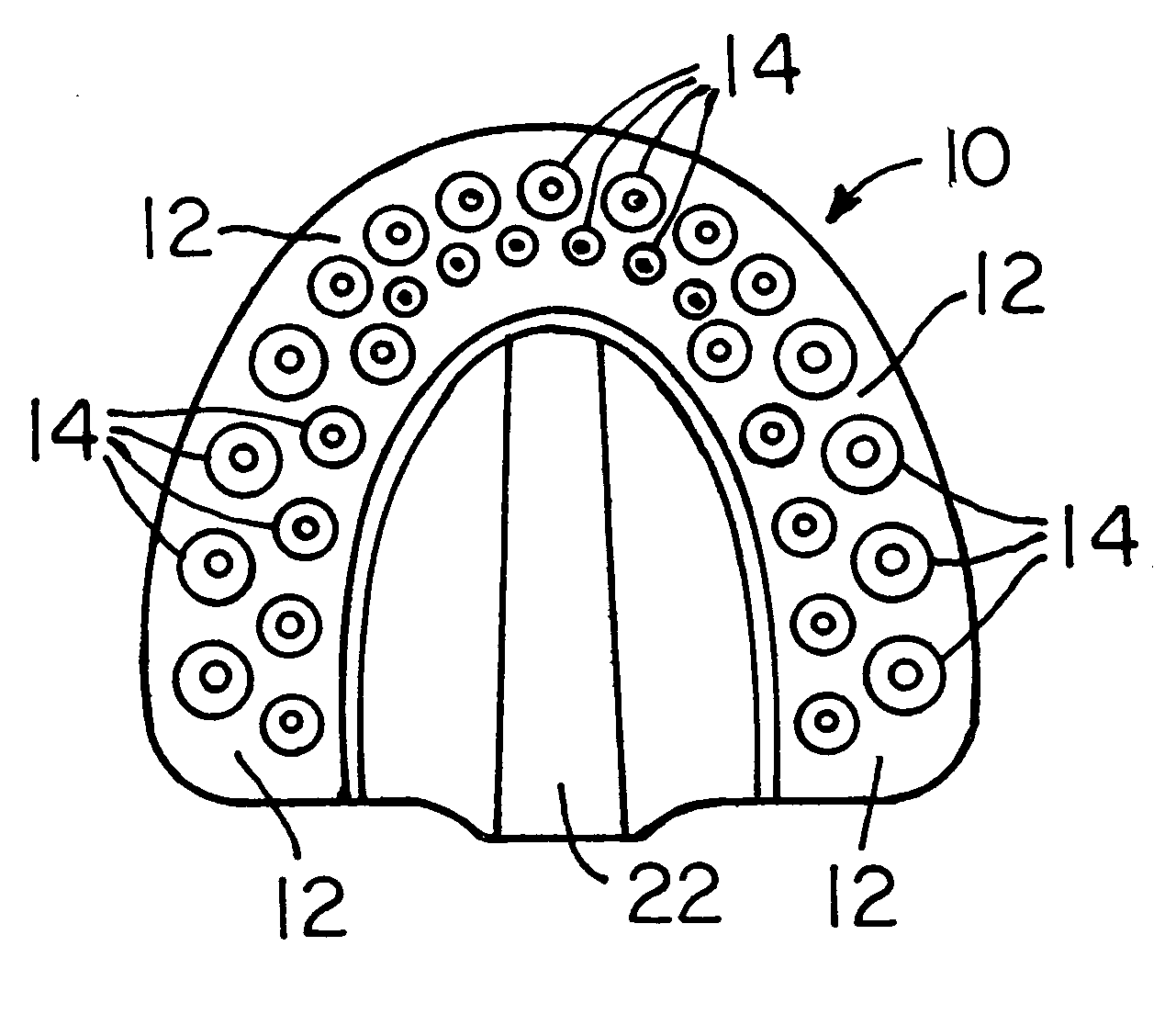Dental model tray used in forming dental model
a dental model and tray technology, applied in the field of dental models, can solve the problems of insufficient rigidity of individual dies, inability to use dies in forming precision prosthetics, and insufficient flexibility of polymeric pins, etc., and achieve the effect of convenient removal and replacement and exceptional accuracy
- Summary
- Abstract
- Description
- Claims
- Application Information
AI Technical Summary
Benefits of technology
Problems solved by technology
Method used
Image
Examples
Embodiment Construction
[0021] Referring now to FIGS. 1-3, a dental model tray 10 is shown. The tray 10 has a substantially planar base wall 12 upon which dental casting material (not shown in drawings) is poured informing a dental model. The base wall 12 if formed from a polymeric material and a plurality of spaced apart, elongate projections 14 are formed integrally with the base wall 12. The projections 14 extend upwardly from an upper face of the base wall 12 so that an elongate axis of each of the projections 14 is substantially perpendicular to the upper face of the base wall 12. The projections are advantageously molded integrally with the base wall 12 and are thus formed of the same polymeric material as the base wall 12.
[0022] The projections 14 are arranged in first and second rows that are substantially parallel with each other. The projections 14 in the first row are offset from corresponding projections 14 in the second row so that any two adjacent projections 14 in one row and an adjacent, c...
PUM
 Login to View More
Login to View More Abstract
Description
Claims
Application Information
 Login to View More
Login to View More - R&D
- Intellectual Property
- Life Sciences
- Materials
- Tech Scout
- Unparalleled Data Quality
- Higher Quality Content
- 60% Fewer Hallucinations
Browse by: Latest US Patents, China's latest patents, Technical Efficacy Thesaurus, Application Domain, Technology Topic, Popular Technical Reports.
© 2025 PatSnap. All rights reserved.Legal|Privacy policy|Modern Slavery Act Transparency Statement|Sitemap|About US| Contact US: help@patsnap.com


